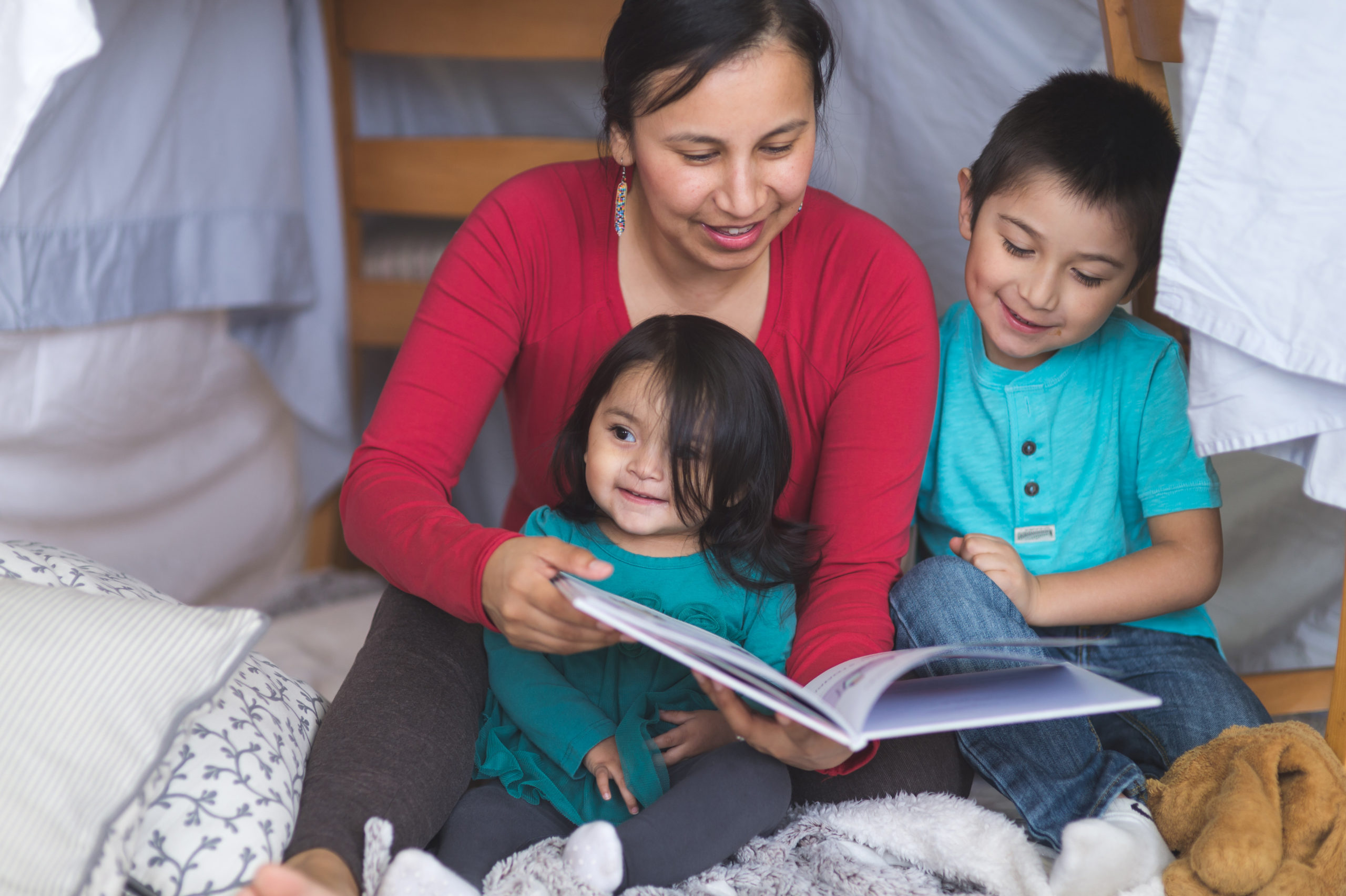I’m a teacher, and as November approaches, parents often ask me to recommend books by Native American authors or with Native American characters. I always have a list handy. But it got me thinking: Why now; why November?
Well, we know the answer, of course. Thanksgiving. It’s generally the only time of year schools and media celebrate the contributions of Indigenous Americans to the current version of this nation. What’s more, many kids’ Thanksgiving books tell a similar (and often falsified) story of the first Thanksgiving.
As parents, you have the power to change this just by the books you put on your children’s shelf—all year long. Dr. Rudine Sims Bishop, a leading multicultural children’s literature expert, says, “Books are sometimes windows, offering views of worlds that may be real or imagined, familiar or strange. These windows are also sliding glass doors, and readers have only to walk through in imagination to become part of whatever world has been created or recreated by the author. When lighting conditions are just right, however, a window can also be a mirror.”
By making sure your child has access to quality books by and about Native Americans all year long, you can create those mirrors, windows, and sliding glass doors. This post will show you how.
How Should We Choose Picture Books About Indigenous Americans?
This is a great question and the answer is important. There are two good ways to choose:
- Look for kids’ books by Indigenous American authors. Often the author’s bio on the book jacket will tell you. If not, you can typically find the answer in a two-minute Google search.
- Also, read the book before you buy or borrow it. Does the book frame Native Americans as “others” or compare them to white people to make it “relatable?” For example, phrases like “Today, Native Americans dress the same way we do.” If so, pass on those. Does the story center Indigenous American characters and create authentic, well-rounded stories? Then get it!
Happily, in the past few years, more Indigenous American authors have been getting published and winning awards. We Are The Water Protectors by Carole Lindstrom even won the Caldecott Medal in 2021! Because of this, it has become even easier to include such stories in your child’s life.
Awesome Kids’ Books by Indigenous Americans
For some great books to get you started, here are a few of my favorites:
Mission to Space by John Herrington
Keepunumuk: Weeâchumun’s Thanksgiving Story by Danielle Greendeer, Anthony Perry, and Alexis Bunten
We Are Water Protectors by Carole Lindstrom
I Sang You Down From the Stars by Tasha Spillett-Sumner
My Heart Fills with Happiness by Monique Gray Smith
We Are Still Here by Traci Sorell
The Walrus and the Caribou by Maika Harper
Where to Find More Ideas & New Books by Indigenous American Authors
You can also check out the American Indian Youth Literature Awards for books for children of all ages. To dig in further and find more awesome recommendations in real time, follow these accounts on Instagram to find reviews, releases, and recommendations:
- @indigenouseducators
- @indigenousbookshelf
- @thunderbirdwomanreads
- @paperbacks_n_frybread
- @massybooks (a female Indigenous owned bookstore)
- @mollyofdenali (a PBS Kids show about an Alaskan Native girl)
Why and How to Build an Inclusive Library for Your Kids
As you build out a more inclusive bookshelf, keep in mind that quite often children’s books about Thanksgiving feature racially insensitive stereotypes about Native American characters and give the false impression that Indigenous Americans:
- lived a long time ago and no longer exist
- had/have a single shared culture, religion, and language
- only exist(ed) to serve as guides or “assistants” to white people
Indigenous Americans live and exist in the United States 365 days a year. There are 574 federally recognized Native American tribes within the United States. As such, books by and about these Americans deserve to be celebrated on your bookshelves and in story times all year round.
This will help families of all backgrounds counteract the white Euro-centric viewpoint kids can learn when they only see white children in picture books. In turn, it will prepare them to act with empathy for others. And for Native American children, seeing themselves represented in a positive light will empower them and give them self-confidence to speak up for themselves and positively advocate for their communities.
Change can begin on your bookshelf. Investing in quality picture books about Native Americans will affect your child as well as the lives of others. It’s a ripple in a pond. Keep sharing books by Indigenous American authors all year round and watch those ripples grow.
Like this post? Share it!


